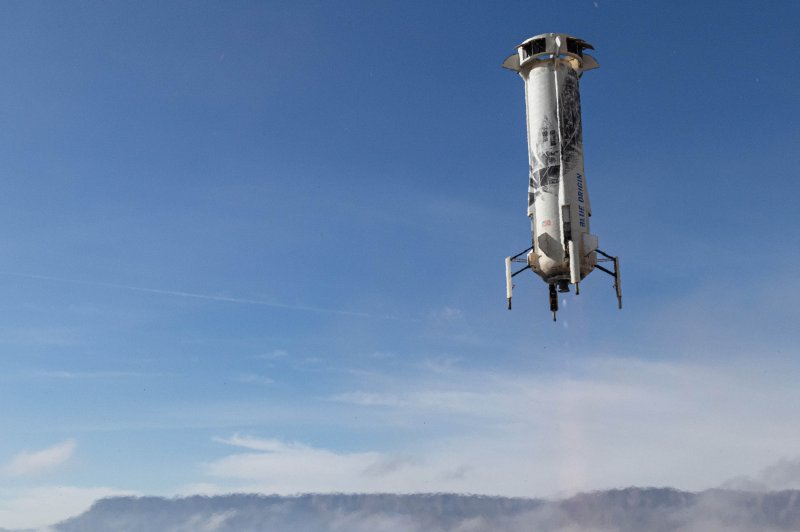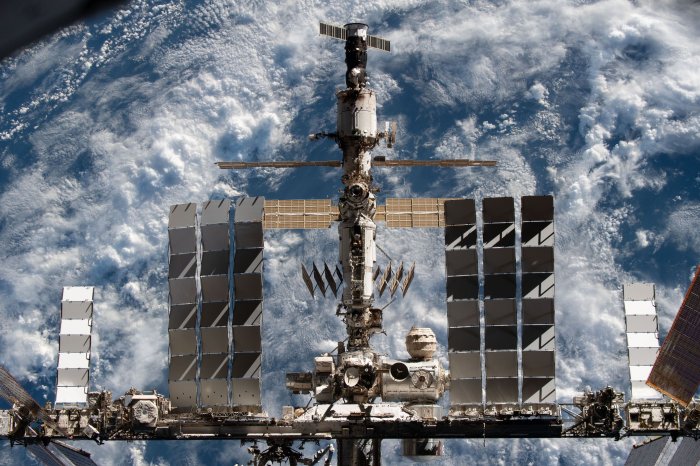1 of 3 | Blue Origin postponed the launch of the company's New Shepard rocket, shown landing after a flight in December, on Thursday in West Texas. Photo courtesy of Blue Origin
Sept. 24 (UPI) -- Blue Origin postponed the launch of the company's reusable New Shepard rocket Thursday in Texas, citing internal power supply issues for NASA and university experiments on board.
"Launch is scrubbed for today. New launch target forthcoming," the company announced on Twitter.
Liftoff had been scheduled for 12:40 p.m. EDT at Blue Origin's launch facilities about 150 miles east of El Paso. The company had delayed an earlier launch Thursday due to clouds in the area.
The launch would have been the 13th New Shepard mission and the seventh consecutive flight for the rocket, which is 60 feet high and emits 110,000 pounds of thrust.
The company, owned by Amazon founder Jeff Bezos, one day wants to fly space tourists in a capsule designed for six people as it also develops its larger New Glenn rocket.
The NASA experiment on the rocket includes sensors designed to help locate a safe site on the moon for upcoming landings, according to NASA and Blue Origin's mission description.
Those sensors require clear skies to function properly, Blue Origin said Thursday, and that was the cause of the initial delay.
"The technologies could allow future missions -- both crewed and robotic -- to target landing sites that weren't possible during the Apollo missions, such as regions with varied terrain near craters," the mission description said.
Blue Origin leads the so-called National Team in developing a human lander for future moon missions. The team includes Lockheed Martin, Northrop Grumman, and Draper.
The sensors are the first payload to fly mounted on the exterior of a New Shepard booster rather than inside its capsule, which the company said could open up opportunities for other exterior technology, including "a wide range of future high-altitude sensing, sampling and exposure payloads."
At least two plant experiments are in the rocket's capsule, one of which was designed by researchers at the University of Florida's Ferl/Paul Space Plants Lab.
"Blue Origin was the right rocket for the mission because it is suborbital, going to the edge of space at 62 miles up, and most of our research has to do with how plants experience suborbital flight," said Jordan Callaham, the lab manager.
"We're really looking at how plants can survive on a journey to space, and whether they adapt quickly to microgravity."
The Florida experiment consists of Petri dishes with leafy greens inside. As the rocket ascends, fluorescent light cameras take images of the plants and their cells.
Callaham said previous experiments have shown changes in the shape and movement of cells, and the new technology will test a better camera for images.
"The flight is a total of 20 to 25 minutes, so we would look for how the proteins are responding during that short time," she said.
Other payloads on board the so-called NS-13 mission include experiments from Johns Hopkins University Applied Physics Laboratory in Maryland, NASA's Armstrong Flight Research Center in California and Colorado-based Space Lab Technologies.
All mission crew supporting the launch are exercising strict social distancing and safety measures to mitigate COVID-19 risks, according to Blue Origin.
The International Space Station is pictured from the SpaceX Crew Dragon Endeavour during a flyaround of the orbiting lab that took place following its undocking from the Harmony module’s space-facing port on November 8. Photo courtesy of NASA
















